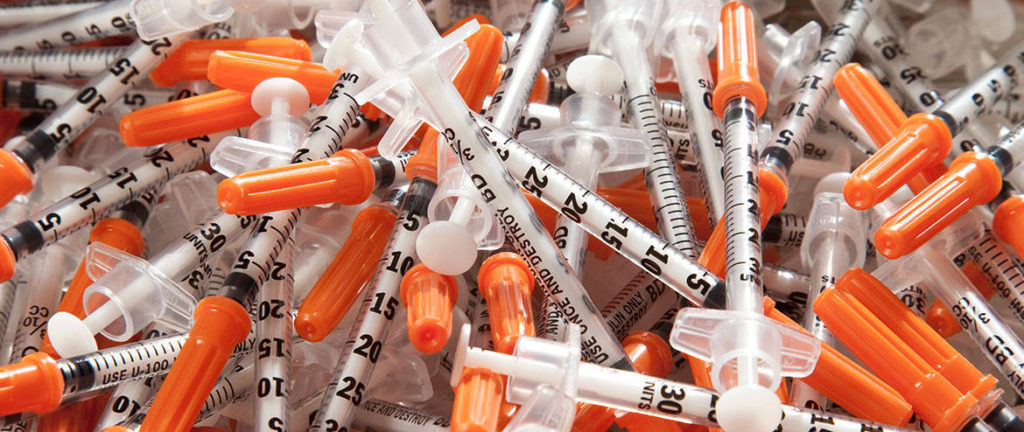From Guest Blogger Lillian Connors–Medical Waste: Sustainable Management Practices

The hazardous nature of medical wastes makes them a potential hazard to public health and environmental well-being. To reduce health and environmental risks that may arise, a healthcare facility must follow approved and certified medical waste disposal guides, as well as practice sustainable waste management protocols. Both the guide and the set of management protocols should include removal, collection, storage, recycling, transportation, and final medical waste disposal.
Medical Waste Management Best Practices
Many types of medical equipment are single-use. They’re not meant to be reused or recycled to avoid contamination. By that premise, a certain amount of medical waste generation cannot be avoided.
However, such a waste stream can be minimized. This is the goal of setting up sustainable medical waste management practices. This can be achieved by implementing proper and sustainable practices such as those detailed below.
Note that the examples below are not encompassing, and the applicability of many of these practices depends upon factors such as unique state regulations, the facility’s capabilities, limitations, and more.
Elimination
* Medical facilities should switch from analog X-ray systems to more advanced digital ones. Digital systems eliminate the need for hazardous chemicals such as developers, fixers, and the film itself.
* There are recyclable items that can be used. For instance, rather than paper cups or disposal thermometer covers, the administration can switch to reusable equivalents such as sterilized or autoclaved glasses, ceramic cups, or washable thermometer proves.
* Improve record-keeping on patients and staff, facility inventories, and other documentation. In addition, it’s also advantageous to streamline management practices. Better record-keeping and streamlined processes help avoid unnecessary or redundant tests and procedures that produce more medical waste.
* The administration can also put into place a procurement policy that clearly prohibits buying products and equipment that contain toxic materials.
Reduction
* A medical facility can lessen the amount of packaging for shipping and transporting products. For example, they can opt to order supplies in bulk for lesser packaging. Multi-month packs or bottles without carton boxes are preferable.
* Substitute high-volume items for more effective counterparts that require lesser packaging.
* Plan purchasing schedules so that the facility can buy supplies “just in time.” This is prevents over-purchasing, which causes lots of expired pharmaceuticals as well as unusable, redundant, or extra items that are needlessly disposed of.
* Put in place inventory control and wastage indicators. These should be done and reported regularly to track health care products and pharmaceuticals on hand. These procedures also reduce losses and expiration of items.
Segregation
* Medical waste must be segregated according to state and facility regulations. Proper segregation is vital in creating a safe environment and should be included in the facility’s medical waste disposal guide.
* Label waste bins according to state and facility regulations. These bins should be placed in all areas where medical waste is expected to be generated. There must be different bins for each type of medical waste.
– Sharps waste containers for used needles, scalpels, syringes, scalpel blades, and other sharps waste.
– High-risk waste containers for infectious waste such as swab waste, gauzes soaked in blood, or sample culture dishes from infected patients
– Pathological waste containers for tissue samples and organs from patients
– Chemical and pharmaceutical waste such as expired medicines
– Low-risk waste bins for swabs or samples from non-infected patients
– General waste bins for solid waste and recyclable waste
Some facilities may need extra waste bins for more specialized waste. This includes:
– chemotherapeutic waste, or hazardous drugs and tools used for chemotherapy
– lead-lined radioactive waste
Waste auditing
A medical facility can better track, manage, and minimize their generated waste by conducting medical waste auditing. This allows the facility to determine the composition, volume, and source of the waste. Through auditing, a medical facility can establish better, more effective, more precise, and more practical waste management interventions.
In-facility Transportation and Storage
Transporting medical wastes within the facility should follow a schedule, ideally in the late evening or early morning when the facility is not busy. Routes should be established for safe movement and to prevent exposure to the staff and patients.
The facility’s storage area should have enough space to hold the waste until it can be properly disposed of. There should be separate space, sectors, or areas for each type of generated medical waste. The storage space should be dry, leak-proof, secure, and safe from pests.
Transportation and Medical Waste Disposal
Hazardous and non-hazardous waste should be transported separately. The transport vehicles and methods must comply with national and state transport regulations.
Most medical wastes are usually incinerated, but disposal methods can vary. Medical waste disposal procedures actually depend on state regulations. Thus, it’s important for the facility to check with their local government unit for such regulations.
Finally, the World Health Organization provides a detailed summary of recommended guidelines for the safe management of medical wastes. You can also check your state regulations for specific guidance in your locality, which may be different from guidelines administered by the WHO.
As health care facilities treat people back to health, generating medical waste is unavoidable. However, with proper and sustainable management practices, the volume of such waste material can be minimized and controlled to ensure public health safety and the preservation of the environment.
